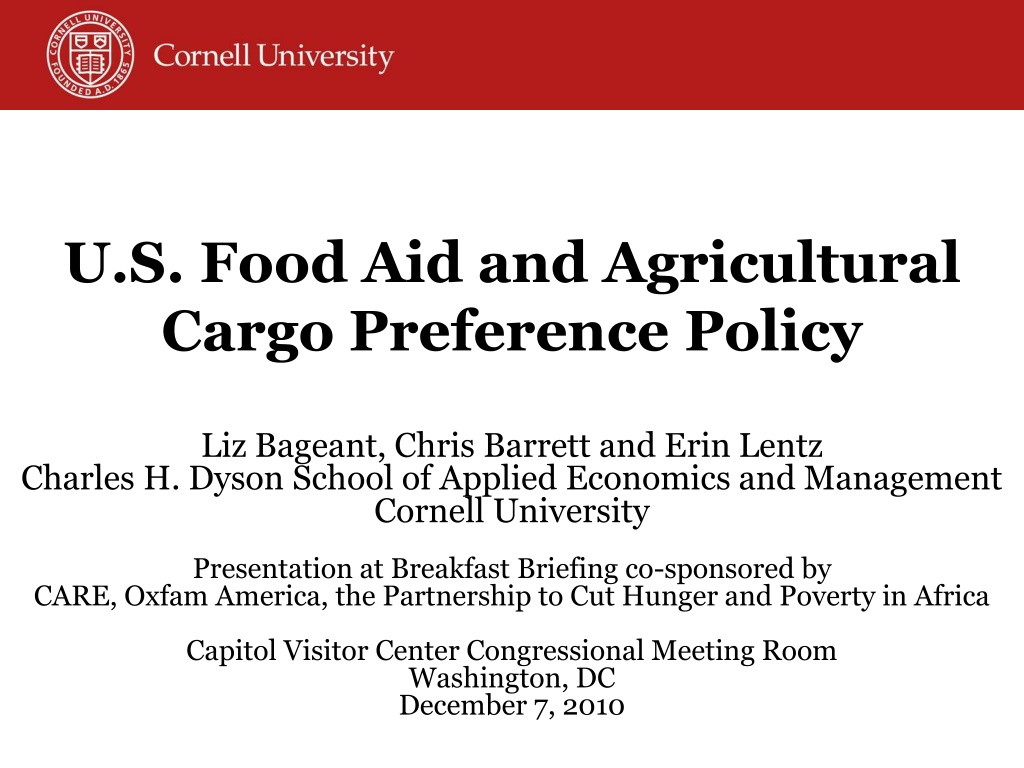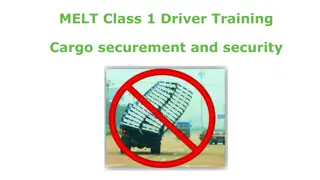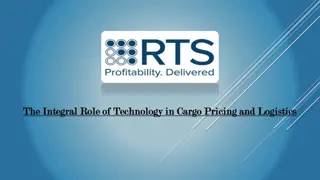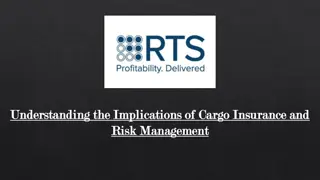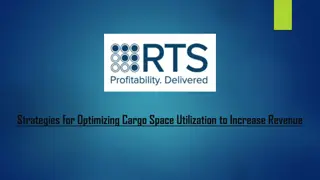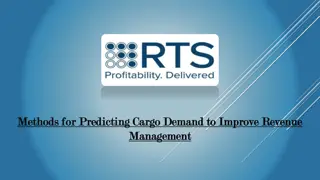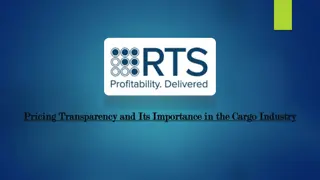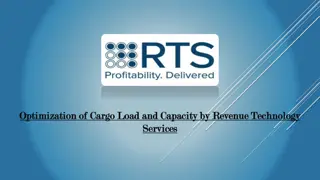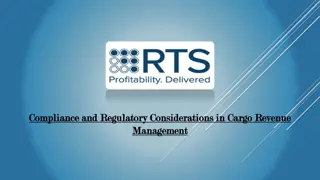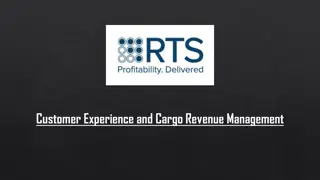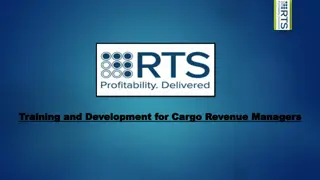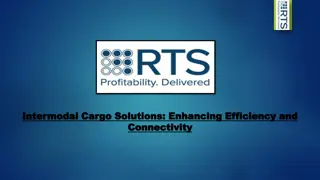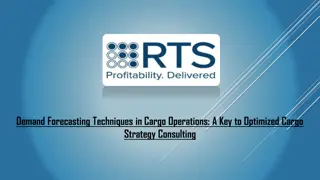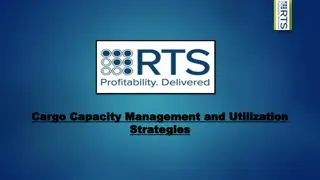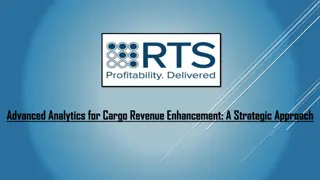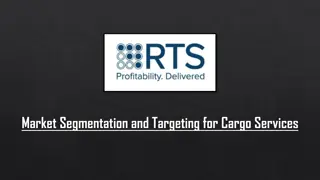Analysis of U.S. Food Aid and Agricultural Cargo Preference Policy
Explore the Agricultural Cargo Preference (ACP) policy requiring 75% of US food aid to be shipped on US-flag vessels, despite potential cost implications. Delve into the objectives, economics, and methodology of ACP to understand its impact on stakeholders and its efficiency in meeting its goals.
Download Presentation

Please find below an Image/Link to download the presentation.
The content on the website is provided AS IS for your information and personal use only. It may not be sold, licensed, or shared on other websites without obtaining consent from the author. Download presentation by click this link. If you encounter any issues during the download, it is possible that the publisher has removed the file from their server.
E N D
Presentation Transcript
U.S. Food Aid and Agricultural Cargo Preference Policy Liz Bageant, Chris Barrett and Erin Lentz Charles H. Dyson School of Applied Economics and Management Cornell University Presentation at Breakfast Briefing co-sponsored by CARE, Oxfam America, the Partnership to Cut Hunger and Poverty in Africa Capitol Visitor Center Congressional Meeting Room Washington, DC December 7, 2010
Cargo preference What is Agricultural Cargo Preference (ACP)? Policy requiring 75 percent of US food aid be shipped on US- flag vessels, regardless of whether these vessels offer a competitive bid for the service. ACP coverage increased from 50% in 1985 Farm Bill.
Desirable objectives ACP s desirable primary objectives According to Maritime Administration (MARAD): Provide essential sealift capability in wartime Maintain skilled jobs for American seafarers Maintain the financial viability of US-flag vessel operators Protect US ocean commerce from foreign domination Since this adds costs to food aid, MARAD provides transfer payments to USAID/USDA to partly pay for these goals.
Basic ACP economics Anti-competitive policy Restricting competition drives up costs and generates windfall gains for eligible service providers. Tinbergen principle Need one specific policy instrument for each policy objective. Blunt tools with multiple objectives are, at a minimum, quite inefficient and usually ineffective at attaining their goals. By construction, ACP is an anti-competitive policy with multiple objectives. Key empirical questions: - How much does it drive up costs? - Who pays for the extra cost? - How far short of its objectives does ACP fall?
Data Data Obtained full year (FY2006) of USAID food aid shipments data. For each of 1,741 shipments: commodity, tonnage, vessel name and flag status, ocean freight costs, and the value of or absence of alternate bids for the shipment. Supplemented with: MARAD ACP and MSP vessel eligibility lists Publicly available information on vessel corporate parentage and crew sizes.
Methods Analytical methods Compute ACP costs and allocate between MARAD and USAID using guidelines in 1987 MARAD-food aid agencies MOU. Compare ACP vessels against militarily useful, US-owned criteria.
ACP costs Anti-competitive mark-up: ~46% and $140 mn/year ACP resulted in a 46% markup over competitive freight costs. Cost to taxpayers on USAID FY06 shipments: $104 mn Adjust for USAID s 74% share of FY2006 US food aid and estimated total cost to taxpayers of ACP is $140 mn Much ACP cost shouldered by USAID because: ACP discourage foreign flag bids so no reimbursement OFD reimbursement rule uses average on vessels < 25 years old, but older vessels 48-64% more expensive.
Great Lakes set-aside (MSA-17) Great Lakes Set-Aside aggravates anti-competition Maritime Security Act of 1996 (MSA-17) requires 25% of all bagged food aid pass through Great Lakes ports, exempt from ACP Implications: MSA-17 absorbs the 25% foreign-flag shipment allowable under ACP Effectively limits shipments from all other ports to US- flag vessels, driving up costs Little actually shipped from Great Lakes: largely just inter-modal transfers.
National security goals 70% of ACP vessels not militarily useful DoD defines militarilyuseful as container vessels (not bulk or tanker vessels) <15 years old and offering liner service. By this definition, 100/142 ACP vessels were not militarily useful. Wasteful duplication of more targeted MSP 1996 Maritime Security Program (MSP) pays owners of militarily useful vessels $2.9 million/year for a call option on vessels and crews. 47/60 MSP eligible vessels qualify for ACP, although only 25 of them carried USAID food aid cargo in FY2006. Just 7% of ACP costs went to these 25 ($7/140mn). MSP payments to militarily useful vessels 10 times larger than ACP.
National security goals Notional reserve of mariners not used In theory, ACP maintains a pool of mariners for call-up. But no documented mobilization of ACP citizen mariners since program began in 1954, spanning 7 major military operations. The cost of maintaining this pool of ~1,400 mariners on the vessels that carried ACP food aid in FY2006? About $100,000/mariner.
Buy American goals Inadvertently helps foreign shipping firms Although the law requires ACP vessels be owned by an American company, those companies are, in turn, commonly owned by foreign shipping firms. Almost 40% of the tonnage hauled by vessels for which we could trace corporate parentage was ultimately owned by foreign corporations. Example: 20 ACP vessels ultimately owned by A.P. M ller- Maersk Group
Policy options Reduce costs by ending anti-competitive policy $140 mn lost due to 46% mark-up. Eliminate MSA-17. Reallocate maritime support to more effective MSP Compared to MSP, ACP less well targeted to and less remunerative for militarily useful vessels. Could cover 40 more MSP ships, rather than older, more expensive vessels. Use strict guidelines on corporate parentage Support only American carriers and merchant mariners.
Policy options (continued) Improve US international food assistance Use savings from ending ACP to help meet unfunded commitments made by Presidents Bush and Obama: double non-emergency Title II to Africa. Even without using the savings from ACP, ending ACP would improve food aid flexibility while reducing admin (and possibly commodity) costs.
Conclusions Agricultural cargo preference policy is antiquated As basic economic principles predict, anti-competitive practice leads to higher cost. And a single policy instrument fails to achieve its multiple, desirable goals, especially given changes in modern commercial shipping practices. Time to end cargo preference so as to liberate US food aid from outdated rules that fail to serve their stated objectives well. There are better tools for advancing national security and buyAmerican objectives.
Thank you Thank you for your time, interest and comments!
Backup tables ACP Costs and Payments on USAID Title II Food Aid FY2006 ($ millions) Costs accrued to USAID 57.6 26.8 (34.8) 49.6 Costs accrued to MARAD 19.5 Costs to taxpayers Total OFD incurred due to ACP Total costs due to missing alternate bids MARAD TPEF payment to USAID Total payments 77.1 26.8 34.8 54.4 103.9
Backup tables Great Lakes Set-Aside aggravates anti-competition FY2006 Tonnage Allocations Bagged MSA-17: 24.4% Non-MSA-17: 0.4% Bulk FOREIGN- FLAG Percent foreign-flag winning bids 22% Competitive ocean rate 9.6% 0.2% Non-competitive ocean rate 46.6% 52% US-FLAG MSA-17: 0.2% Non-MSA-17: 18.8% 100% Missing foreign-flag bid 25% TOTAL 100%
